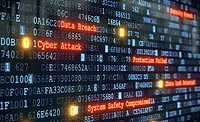Majority of employees take cybersecurity shortcuts, despite knowing risks
New research from ThycoticCentrify reveals workers’ attitudes to cybersecurity and risks they take to get the job done

Workers are engaging in risky behaviors which could put their company’s digital security at risk, despite knowing the dangers, a global survey of more than 8,000 employees has revealed.
ThycoticCentrify commissioned the independent market research specialist Sapio Research to poll workers from around the world to discover if they are following good cybersecurity practices. The results make for concerning reading – particularly when considered in the wider context of remote or hybrid working. The survey found that 79% of respondents have engaged in at least one risky activity over the past year. More than a third (35%) have saved passwords in their browser in the last year, a similar number (32%) have used one password to access multiple sites, and around one in four (23%) have connected a personal device to the corporate network.
Despite almost all respondents (98%)* having an awareness that individual actions such as clicking on links from unknown sources or sharing credentials with colleagues is a risk, only 16% of respondents feel their organization is at a very high risk of a cybersecurity attack.
Joseph Carson, Chief Security Scientist and Advisory CISO at ThycoticCentrify, said: “People working in the cybersecurity sector know how their colleagues should behave when it comes to keeping their devices safe and protecting the wider company. But are these messages getting through?
“We’d urge employers to redouble efforts to encourage the best possible digital security practices in staff and remind them of the risks of failing to secure networks. A ransomware attack or major breach has major consequences which can last for years, so every organization needs to establish security processes and work to ensure they resonate with employees.”
Just 44% of respondents received cybersecurity training in the past year, meaning that more than half of the employees surveyed were left to cope alone with the fearsome threat landscape created by home working. Smaller organizations were the least likely to have given their staff cybersecurity training over the past year.
“Remote or hybrid working also poses a particular challenge to security, so organizations should be sure to embed good practices in their staff no matter where they are working from,” Carson continued.
Staff are more likely to rate the cyber risk to their organization as high (55% compared to 43%) if they have been trained, indicating they have a better understanding of the risks.
Despite knowing that clicking on links from unknown sources presents a risk to an organization, only 16% of respondents feel their business is at very high risk of cybersecurity attacks – an assumption contradicted by the 79% of respondents who saw an increase in the number of fraudulent and phishing messages in the last year.
Key Findings from the United States:
- 86% of respondents in the United States acknowledged that the companies they work for face small to very high cyber risk, however nearly half of all respondents (48%) admitted that they have not received any cybersecurity training from their employers in the last year.
- Despite insufficient rates in employee cybersecurity training and a high sentiment surrounding workplace cyber risk, more than a quarter (26%) of all US respondents still feel there is fairly low to very low risk associated with allowing family members to use company devices.
- More than a third (39%) of US employees admitted they feel that it’s acceptable to access work systems via public Wi-Fi in order to get work completed.
- Only 14% of US employees cited “role-based access controls” as a priority network security measure implemented by their organization.
Additional Key Findings
SMBs at higher risk
- People working in SMBs are least likely to have received cybersecurity training in the past year.
- Just under half (47%) of those who work at companies with more than 5,000 employees underwent training in the last 12 months compared to 20% of employees at companies with less than 10 staff and 32% at organizations with between 11 to 50 employees.
- Those at smaller companies perceive their risk to be lower, with just 37% of employees at organizations with 1-10 employees saying there is a high risk, compared with 50% at organizations with more than 100 employees.
- Smaller companies were also least likely to have implemented protection such as multi factor authentication (MFA) or Virtual Private Networks (VPNs) compared to larger organizations.
Personal Responsibility for Security
- The survey revealed an overarching sense of responsibility among employees, with 86% agreeing that they have a personal responsibility to ensure they do not expose their organization to cyberthreats and 51% saying they still think IT departments should have sole responsibility to protect companies.
Download the full report: Cyber Security Team’s Guide: Balancing Risk, Security and Productivity
Looking for a reprint of this article?
From high-res PDFs to custom plaques, order your copy today!






